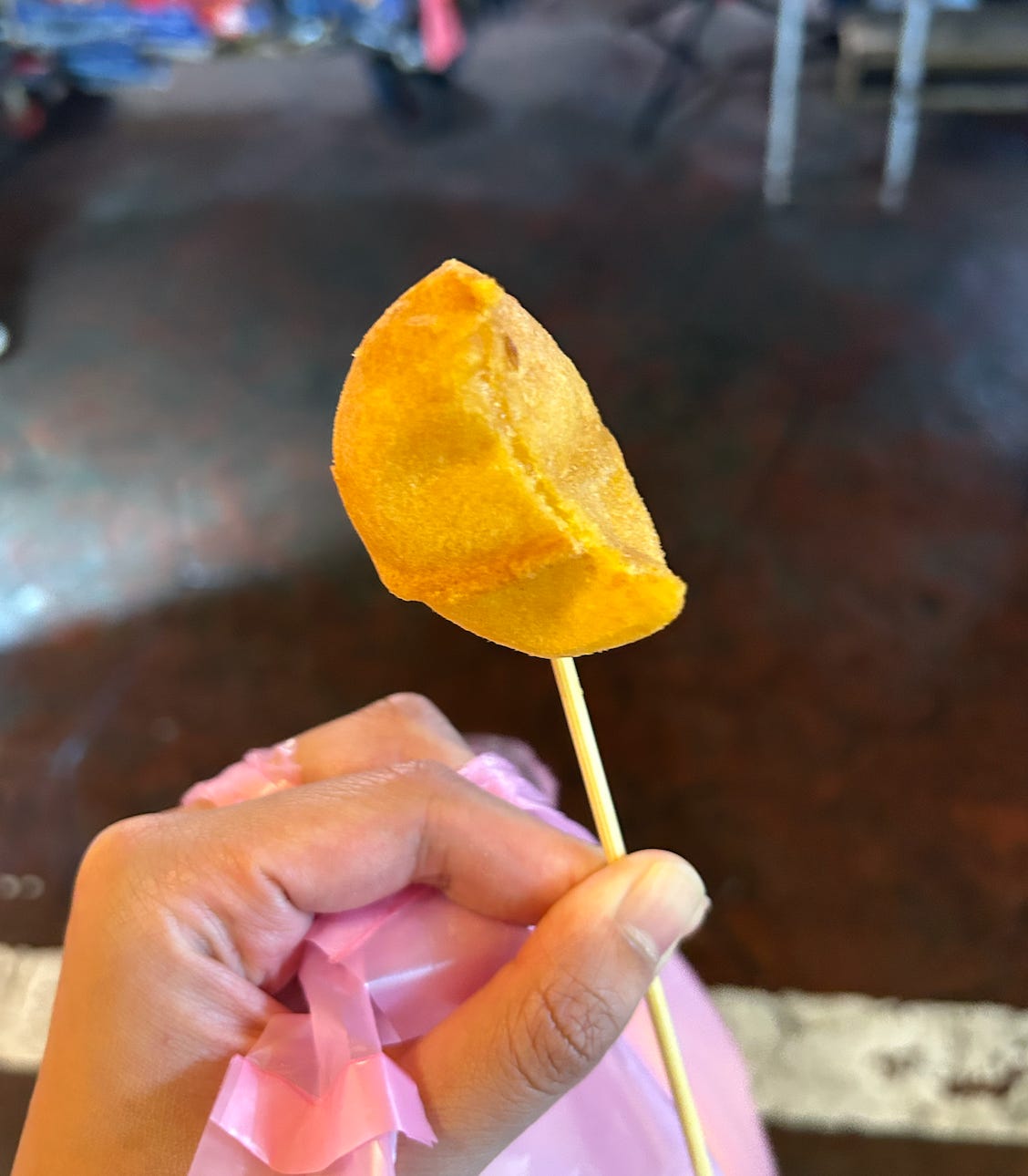Most of us are familiar with the Italian term “al-dente” which translates in English to “to the tooth.” Al-dente is used in pasta recipes to describe how the noodle should be slightly undercooked when you bite into it. The noodle should feel slightly firm to your teeth before you bite all the way through. We all love a bit of resistance.
Fascinatingly, it’s difficult to visually tell what is al-dente. You could cut a strand of pasta and look for a whiteish, uncooked core, but it’s hard to determine what radius and percentage of the cross-section should be undercooked to achieve a perfect al-dente. The best way is to just chew it.
In my recent travels to Taipei, I spent a lot of time in night markets because I was lonely and scared of what new horrors the next day could bring. Amongst my time there, I tried a lot of oily street food and even cried into a bowl of strawberry shaved ice without strawberry.
The Linjiang Street Night Market 臨江街夜市 was 10 minutes away from the place I was staying at and was my go-to place to eat dinner alone because I kept being stood up by guys who told me that they wanted to meet but unfortunately “couldn’t make it” because they “didn’t realize their hotel was fully booked” and “didn’t want to stay out too late.” Another great thing about the night markets is that no one can judge you for getting a little snack. But, aha! I was in fact, getting a meal.
After eating a bag of fried chicken 鹽酥雞 and two lamb skewers 羊肉串,I wanted a drink to wash it all down because that’s exactly how the Taiwanese food-induced-thirstiness-and-beverage-cure-conspiracy operates. On my way down the rainy wet stretch of the market approaching Tonghua Street 通化街 and feeling the ache of the large bruise on my ass from slipping down the stairs earlier that day, I was stopped by an old couple peddling chestnuts.
「試一下吧!冰的口感超級QQ」”Come try it! The iced ones are super QQ”
With two nuts in my hands and one in my mouth, I realized I had been living in ignorance. The entire time I was in Taiwan, I kept noticing this peculiar set of letters litter the signboards at food stalls, beverage stores and food ads.
What in the world is QQ?
With my limited knowledge, I assumed QQ meant what it means in online circles in China and Hong Kong: an outdated way to say the word “cute” over text. And while chestnuts are cute up close, upon further observation and discovery, QQ does not mean that.
QQ is used by Taiwanese people to describe a firm and chewy, bouncy or springy texture that not only resists your teeth but also gives it a warm reach-around embrace before telling you to try again next time.
QQ apparently comes from a Hokkien word that means chewy but I’m too lazy to find that word right now and people just use the letter Q anyway. QQ, like salt, is a way of life and is a marker for how good the texture of food is.
Tapioca pearls, the black balls that give bubble tea (boba for big brain folk) its lifeblood, are probably the most well-known food that’s QQ to a T. Sweet potato balls, glutinous rice balls 飯糰,mochi, thick cut noodles in beef noodle soup 牛肉麵 and even the fat slab on a pork belly in braised pork rice 滷肉飯 is described as QQ .
Scientifically, I think there’s something about the usage of tapioca flour in their cuisine and the formation of starches that create this bouncy experience but unfortunately, I’m no woman in STEM.
Not everything is QQ. I wouldn’t call the firm texture of good wonton noodles QQ, because it has a thinner, more elastic and snappy quality to it rather than being bouncy. Japanese ramen noodles, which I prefer in general, are like wonton noodles in that they are also made with kansui alkaline water to give it a bite, but aren’t QQ to me. I also wouldn’t classify Southeast Asian dessert cakes “Kueh” as QQ, because while they are bouncy and do have resistance when you bite into it, they have a glutinous stickiness that isn’t QQ either.
While I think QQ is fun, I do think it can get tiring to chew once in a while. I can’t help but to think why people in Taiwan like QQ texture so much. It brings a kind of whimsy that I think is a bit childish and also a bit funny. Gnawing on little balls and sucking them through a fat straw makes you look, well, a bit foolish. Somehow the phenomenon of QQ is kind of similar to the cheery flourishes Taiwanese people add to their texts and the ones I see pinging up in my Line group chats. Adding a 喔~ 嚕~ 唷! (O~ Lu~ Yo!) after the end of every sentence can make any hard to swallow text more palatable. Maybe that’s the real spirit of QQ. Adding bit of foolishness in an endearing, yet kind of annoying way.
Rather than sogginess and textural homogeny, the key is to fight back a little. Eye-to-eye with the old couple urging me to purchase the hundred strong bag of their homegrown ice cold QQ chestnuts, I found the spring in my step again as I walked down the street, never to return.




slurp